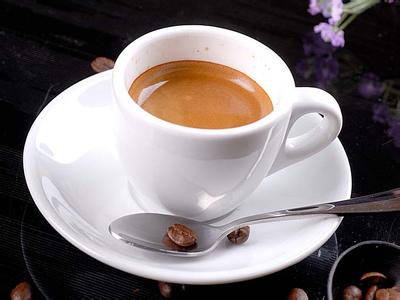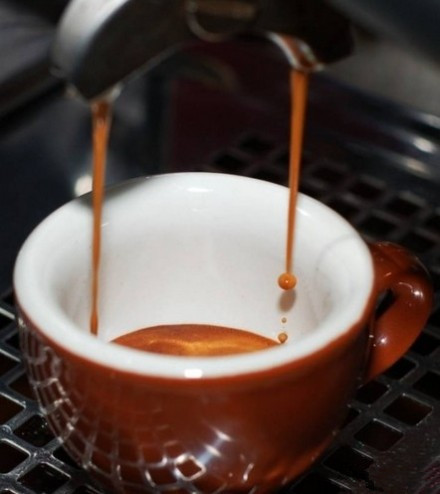Talk about Espresso.

First of all, espresso is a fairly fast way to cook coffee, the principle of cooking is pressure, not gravity. In 1903, the espresso Cafe was developed in both Milan and Turin, Italy.
Espresso can also be used to refer to a mixed coffee bean that is specially baked for the espresso machine. Espresso roasted coffee beans are made from the highest quality Latin American and Indonesian coffee. If you brew the coffee properly, it tastes like caramel with a slightly sweet taste, high concentration, low acidity and very strong aroma.
In addition, espresso can also be used to refer to a roasted color of coffee beans. Unfortunately, the coffee industry does not have a standard way to identify various baking colors. Espresso roasted coffee is the lightest in the dark roasting series, similar to pure chocolate. Italian roasting is darker coffee, while French roasting is darker, almost black.
Finally, espresso can also be used to refer to a coffee drink (more formally, cafe espresso). This is a concentrated, mellow coffee extract of the excellent drink. Usually the amount of coffee used in a serving of espresso is 1/3 or 2/3 of that of dripping coffee. Because espresso can be said to be the essence of coffee, coupled with the need to brew and drink it, you can enjoy fresh and pure coffee more than other ways of cooking coffee.

◎ Espresso is a life.
In Italy, Espresso is simply a local life concerto. In the morning, drink a latte (Latte); then, people like to drink Espresso in the store, everyone waits in front of the bar, and after getting the first-hand coffee, they drink it in three sips. The guests in the shop knew each other and talked to each other, and even the coffee maker (Barista) took part in the chat, so the cafe became a social place.
In the United States and Taiwan, Italian-style cafes are littered with places for young people to date and chat. Most of them don't drink Espresso, only cappuccino or latte with milk. Most of these young people don't know the delicacy of Espresso. They just come here to see the atmosphere of Espresso. Must, this is also a kind of Espresso life!
◎ Espresso is a mixed coffee.
Espresso is an art of integrated coffee that allows people to spend their whole lives studying its recipes. Because of the role of high-pressure hot water, it is easy to highlight the characteristics of a single coffee bean, resulting in taste imbalance of Espresso. Therefore, coffee companies are serious about developing their own recipes, even proud of it.
Generally speaking, sun-cured coffee beans are mellow, while water-washed beans are sweeter; 1-2-year-old new beans have lively acidity and taste, while old beans are steady and thick. As for the recipe, it is as difficult as writing a music concerto, which only depends on the old master's long-term experience and self-experiment. no wonder the coffee maker enjoys a high status in Italy.
◎ Espresso is a baking method.
Espresso is a baking method, and you can buy a bag of "Espresso" in the store, which refers to heavy-roasted coffee beans suitable for brewing into espresso. The importance of lipids has been discussed in the previous section. Emulsified lipids are the main source of alcoholic flavor, so Espresso often uses deeper baking to drive lipids to the outlet of the cell pores without spilling large amounts of coffee beans; by this time the baking temperature has exceeded 200 degrees Celsius, which may destroy the whole pot of beans in a few seconds. Therefore, the mastery of baking degree is undoubtedly an art.
◎ Espresso is a kind of cooking.
Due to the strong flavor of Espresso, adding milk or other drinks will not be diluted, so a variety of additives can be made into a variety of coffee, has become a kind of cuisine. For example, Espresso can be added to milk to make Cappuccino or caffe Latte; chocolate sauce is added to make coffee mocha (caffe Mocha); if only milk foam is added, it is Espresso Macchiato; in addition, whipped cream can be added to make Espresso ConPanna.
Important Notice :
前街咖啡 FrontStreet Coffee has moved to new addredd:
FrontStreet Coffee Address: 315,Donghua East Road,GuangZhou
Tel:020 38364473
- Prev

Why do people go to cafes?
I like coffee very much, and I also like cafes very much. I used to think that if you go to a cafe, you must drink coffee.
- Next

"dissecting" coffee
The main source of protein calories is protein, and like dripping coffee, most of the protein will not dissolve, so no matter how much coffee you drink, the nutrition you get is limited, which is why coffee will become a sacred food for dieters. Sugar: without sugar, you will not only feel the bitter taste of caffeine and the sour taste of tannin, but also feel the sweet taste.
Related
- Beginners will see the "Coffee pull flower" guide!
- What is the difference between ice blog purified milk and ordinary milk coffee?
- Why is the Philippines the largest producer of crops in Liberia?
- For coffee extraction, should the fine powder be retained?
- How does extracted espresso fill pressed powder? How much strength does it take to press the powder?
- How to make jasmine cold extract coffee? Is the jasmine + latte good?
- Will this little toy really make the coffee taste better? How does Lily Drip affect coffee extraction?
- Will the action of slapping the filter cup also affect coffee extraction?
- What's the difference between powder-to-water ratio and powder-to-liquid ratio?
- What is the Ethiopian local species? What does it have to do with Heirloom native species?

